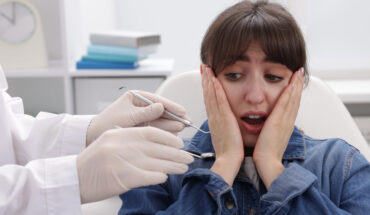
In recent years, dental tourism has emerged as a significant segment of global health travel, and in 2025, a distinct shift is occurring within this industry. While general dentistry—such as cleanings, fillings, and implants—has traditionally dominated the market, orthodontics is now taking center stage. Patients are traveling across borders not just for cosmetic procedures, but for long-term orthodontic treatments such as braces, clear aligners, and jaw realignment surgeries. This evolution marks a turning point in how people access and prioritize orthodontist care worldwide.
Why the Boom in Orthodontic Dental Tourism?
Orthodontic care, especially in countries like the United States, Canada, the UK, and Australia, often comes with hefty price tags and long waiting lists. A full course of traditional braces can cost anywhere from \$5,000 to \$10,000, with clear aligners sometimes exceeding that amount. Additionally, insurance coverage for orthodontic treatment is limited in many regions, leading patients to seek affordable alternatives overseas.
In 2025, this search for cost-effective, quality care has driven a sharp increase in patients opting to see an orthodontist in countries like Mexico, Turkey, Hungary, India, Thailand, and Colombia. These destinations offer state-of-the-art facilities, internationally trained specialists, and significant cost savings—sometimes up to 70% cheaper than in Western nations.
Trending Destinations for Orthodontic Tourism
According to industry reports, the most sought-after countries for dental tourism with a focus on orthodontics include:
- Turkey: Known for high-tech clinics and English-speaking orthodontists, Turkey combines affordability with luxurious tourism packages.
- Mexico: A top destination for North Americans, Mexico offers proximity, cost efficiency, and reputable dental clinics, especially in cities like Tijuana, Cancun, and Los Algodones.
- Hungary: Often referred to as the “dental capital of Europe,” Hungary boasts well-established orthodontic centers that cater to patients from the UK, Germany, and Austria.
- Thailand and India: With internationally accredited clinics and affordable pricing, these countries are seeing a steady rise in orthodontic tourists from Australia and the Middle East.
Technological Innovation Driving Change
Orthodontic treatment used to require multiple in-person visits over several months or years. In 2025, technological advancements are making remote treatment planning more feasible, even for travelers. Clinics now utilize:
- 3D scanning and digital impressions to eliminate the need for physical molds.
- Teleorthodontics that allows patients to consult with their orthodontist remotely after initial treatment.
- AI-driven treatment simulations that show projected progress and outcomes before patients commit to the plan.
- Clear aligners with mobile tracking apps, enabling orthodontists to monitor patient progress from across the globe.
These tools not only improve the accuracy of treatments but also make it possible for international patients to return home and continue care with minimal in-person visits.
Quality and Safety: What’s Improving?
In 2025, one of the most positive trends is the improvement in safety standards and transparency in the dental tourism industry. Accreditation bodies like the Joint Commission International (JCI) and the International Congress of Oral Implantologists (ICOI) have expanded their oversight to include more orthodontic clinics. Patients are now able to verify credentials and reviews online, reducing the risks associated with seeking care abroad.
Many clinics now offer comprehensive packages, including airport transfers, accommodation, post-treatment support, and multilingual staff to ease the journey. Some even provide guarantees on orthodontic appliances and offer follow-up care in partner clinics abroad.
The Rise of Hybrid Orthodontic Care
An emerging model in 2025 is hybrid care, where patients begin their orthodontic journey abroad but continue it at home. For example, a patient might travel to get braces installed by an orthodontist in Hungary and then work with a local provider for monthly adjustments. Cross-border collaboration among dental professionals is becoming more common, facilitated by digital records, cloud-based imaging, and universal treatment protocols.
This hybrid approach combines the cost benefits of dental tourism with the convenience of local care, appealing especially to younger adults and working professionals.
Challenges and Considerations
Despite the promising trends, orthodontic tourism is not without challenges:
- Continuity of Care: Long-term treatments like braces or aligners require adjustments and monitoring over time, which can be complicated when patients return home.
- Communication Barriers: Language differences and medical terminology can sometimes lead to misunderstandings in treatment planning or expectations.
- Legal and Insurance Issues: Some countries do not offer legal recourse in the event of malpractice or complications, and most dental insurance plans won’t cover treatments performed overseas.
Patients considering this route should perform thorough research, verify clinic credentials, and have a clear plan for follow-up care.
The Future of Orthodontic Tourism
In 2025 and beyond, orthodontic dental tourism is expected to continue growing, driven by affordability, accessibility, and the blending of healthcare with travel experiences. Innovations in digital dentistry will further enable patients to receive high-quality orthodontic care regardless of location. The key will be maintaining transparency, safety, and continuity of care as more patients explore global options for a better smile.
Ultimately, the future of orthodontist care is borderless. As international standards rise and patient confidence grows, orthodontic tourism is transforming from a niche option into a mainstream solution for people seeking straighter teeth and healthier smiles—no matter where they are in the world.




